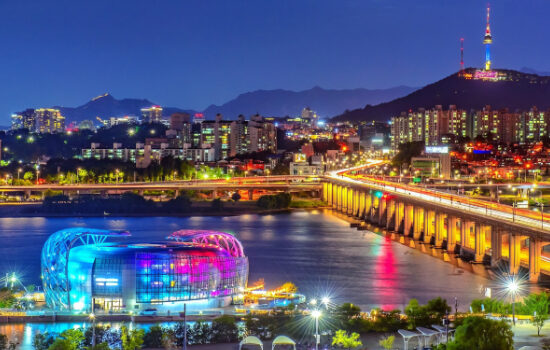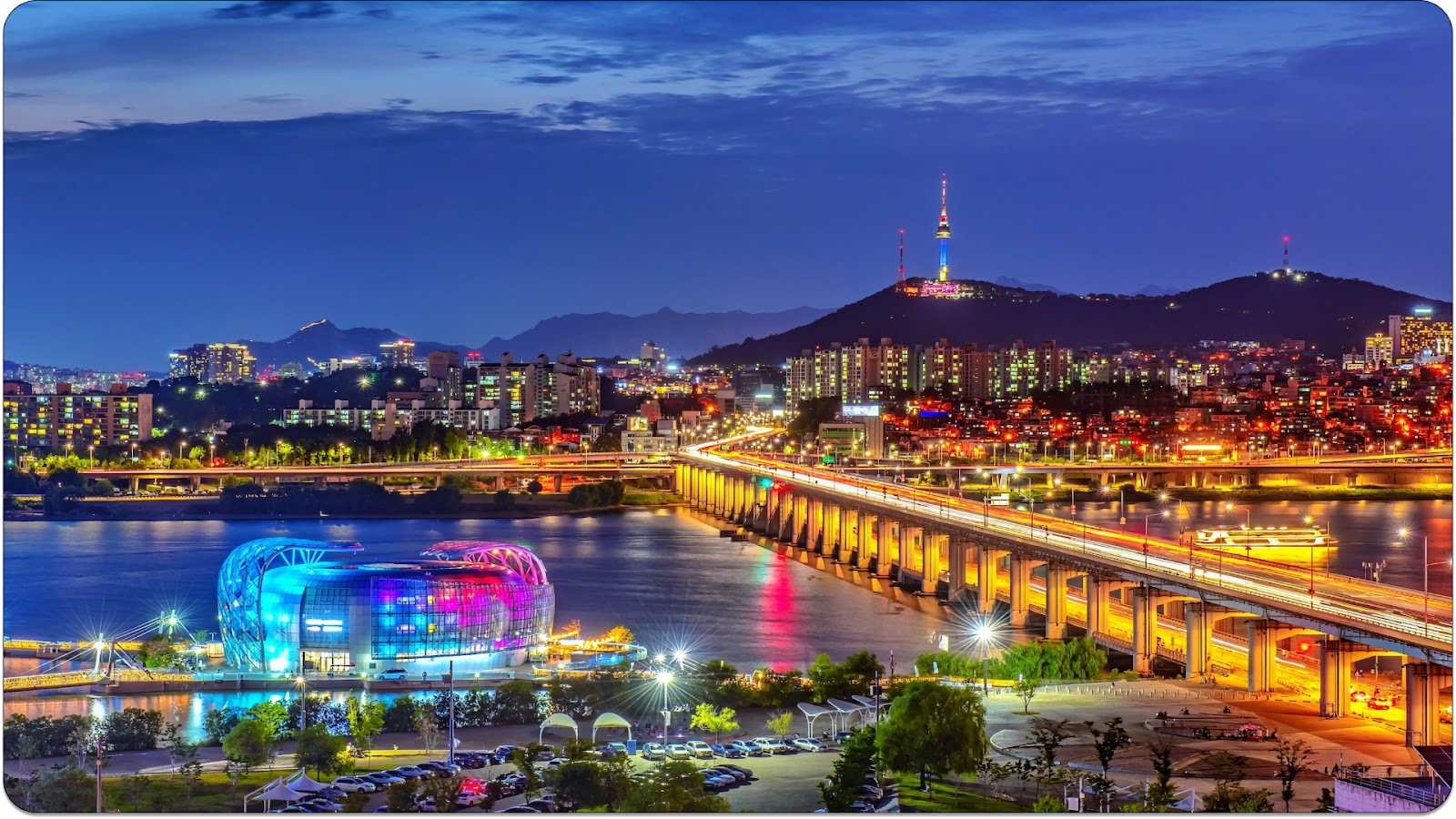
Seoul mixes past and present in a way few places can match. Picture traditional markets buzzing with energy. Neon-lit shopping streets and ancient palaces stand alongside shiny skyscrapers. Buddhist temples, tech hubs, and mountain parks coexist here, blending Korean heritage with modern city life.
Whether you crave street food, K-pop culture, or mountain hikes, Seoul has it all. Each corner offers something distinct, never repeating the same vibe twice. Explore these spots to discover why Seoul captivates visitors.
Experience Royal Life at Gyeongbokgung Palace
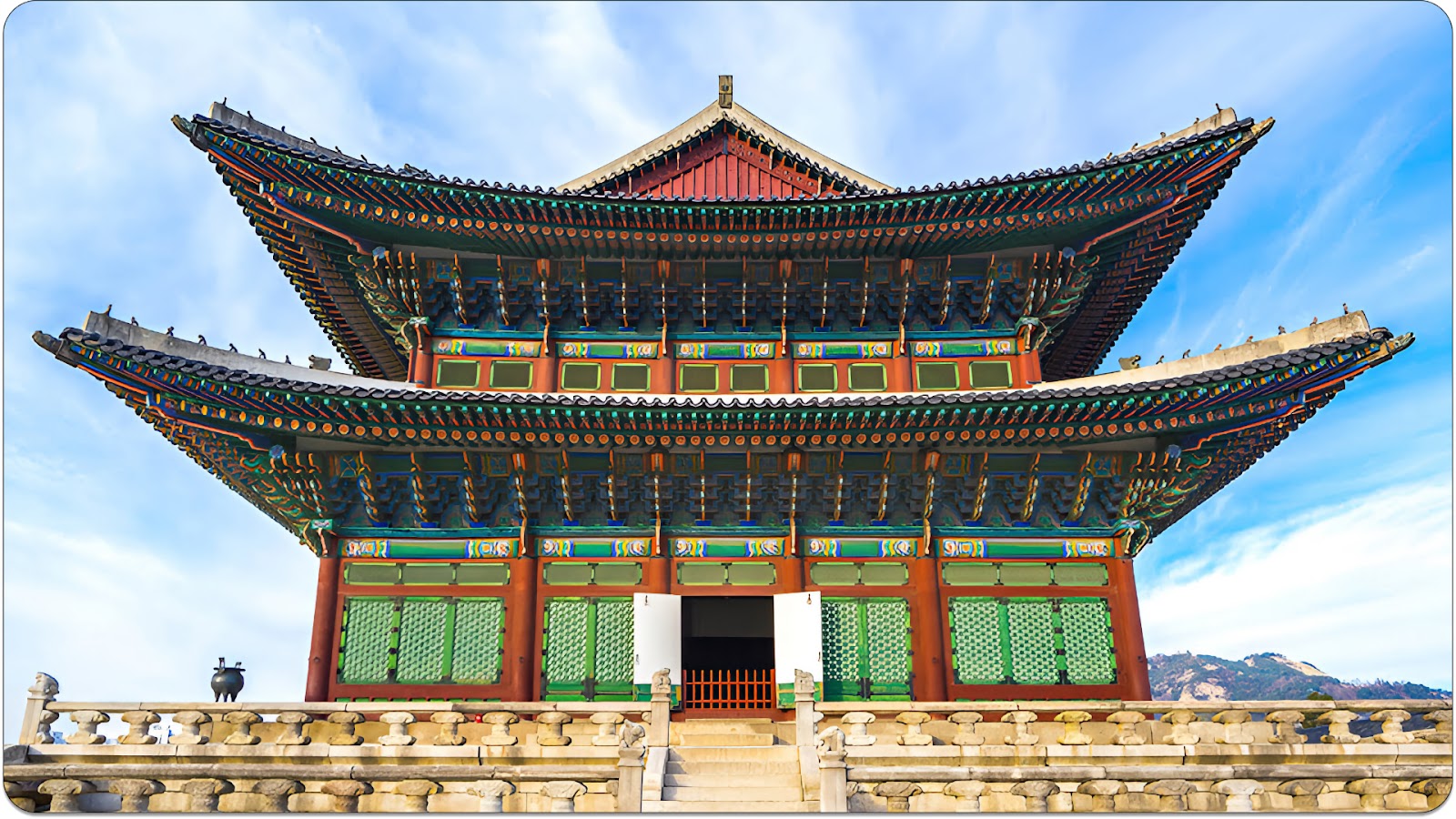
Gyeongbokgung, biggest and most striking of Korea’s Five Grand Palaces, immerses visitors in Joseon Dynasty grandeur. Explore sprawling courtyards, gaze up at detailed wooden buildings splashed with bold hues, and time your visit to watch ceremonial guard shifts—dramatic reenactments held several times a day. Here’s a tip: grab a Hanbok from nearby rental shops before heading to the palace.
Wearing traditional attire isn’t just about snapping Instagram-worthy pics. It gets you free admission, letting you bypass ticket queues entirely. Stride through palace gates in flowing silk, feeling like royalty from Korea’s past. Blend with locals doing the same, pose against centuries-old backdrops, and imagine life as nobility while wandering halls and gardens steeped in history.
Walk Through History in Bukchon Hanok Village
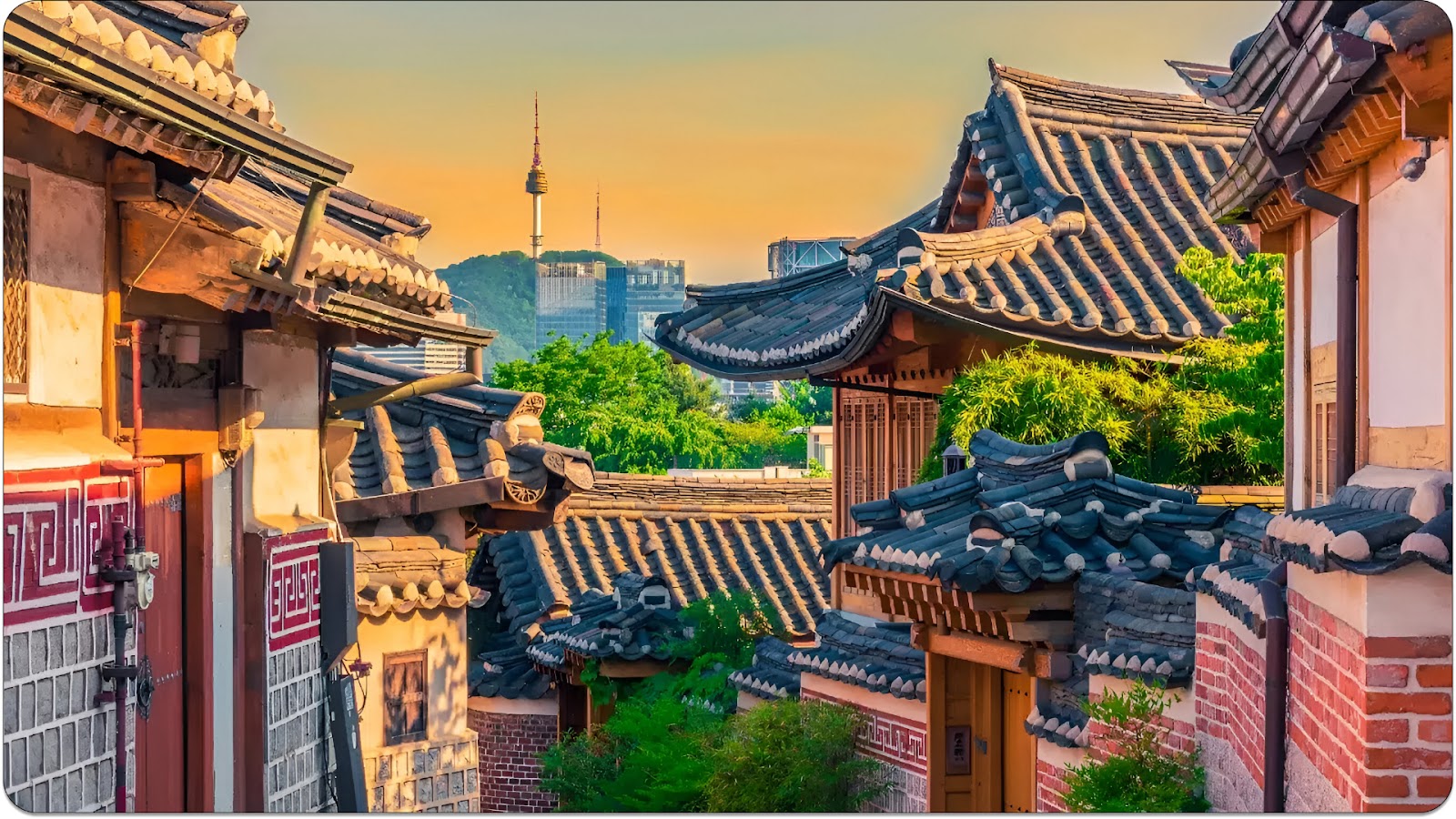
Nestled between Gyeongbokgung and Changdeokgung Palaces, Bukchon’s maze of alleys connects two iconic sites. This neighborhood preserves hanoks—traditional Korean homes—in original layouts. Designs vary: L-shaped, U-shaped, or square, each wrapping around central courtyards meant for family life. In colder northern areas, square hanoks trapped heat efficiently, showing how architecture adapted to harsh winters.
Meander uphill lanes to spot centuries-old houses with curved roofs and paper windows. Many hanoks now host cultural workshops, guest stays, or tea houses where you can sample local brews after exploring. Try crafting traditional art or sip tea surrounded by historical ambiance. With minimal modern additions, these structures offer unfiltered peeks into daily life from generations ago.
Touch Clouds at N Seoul Tower
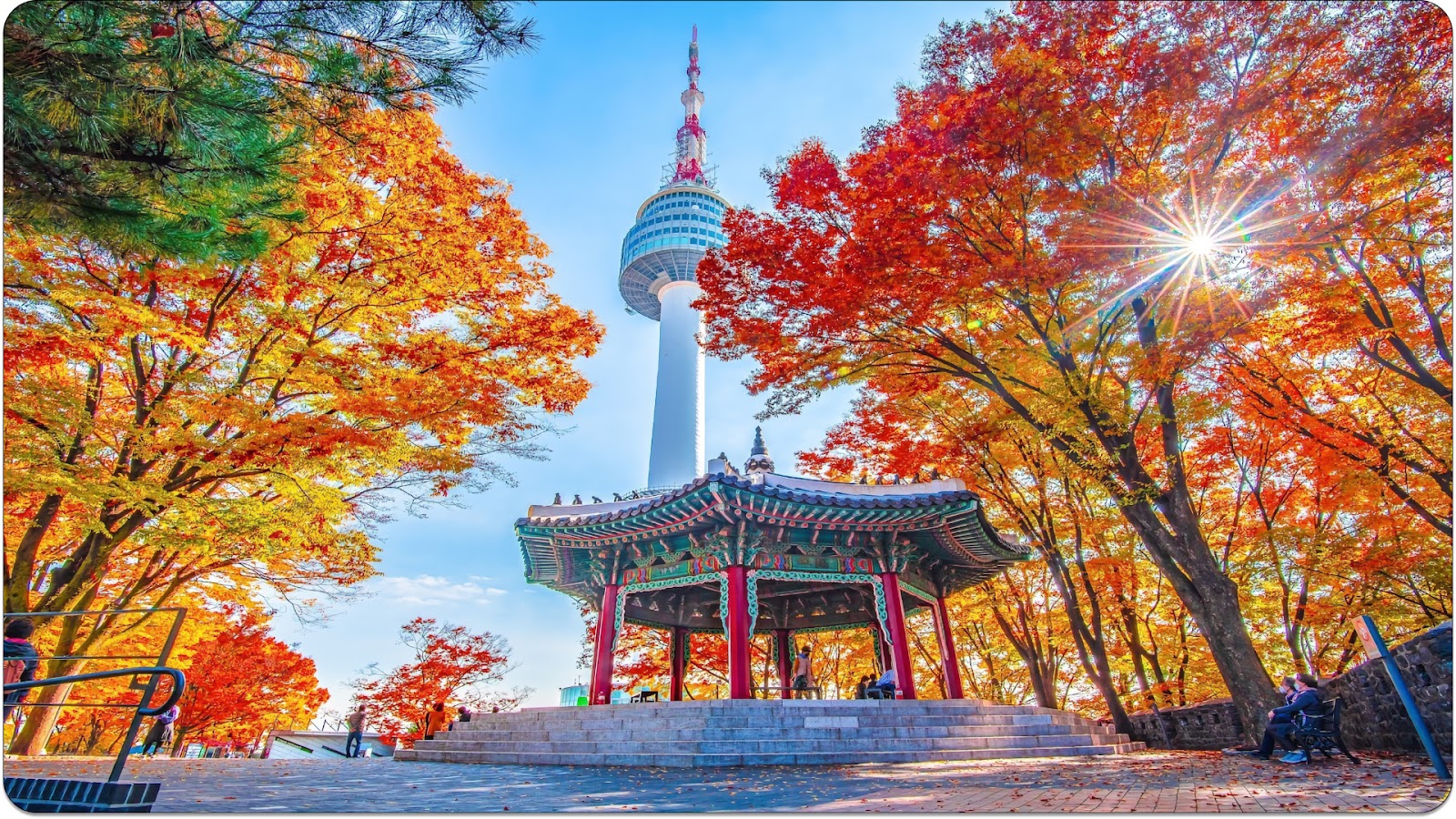
Reach Seoul’s iconic tower by scenic cable car or hiking forested trails up Namsan Mountain. Observation decks deliver sweeping 360-degree city views—days buzz with urban energy, while nights dazzle with endless twinkling lights below.
At the base sits a modern mall with budget-friendly eateries and shops. Don’t skip the rooftop terrace, quieter than the main decks, offering unique angles of Seoul’s skyline. This spot also houses Seoul’s “Love Locks,” thousands of colorful padlocks clipped to fences by visitors worldwide. Each lock bears handwritten names or messages, creating a vibrant metal mosaic that’s become a landmark itself.
Feast Like a Local at Gwangjang Market
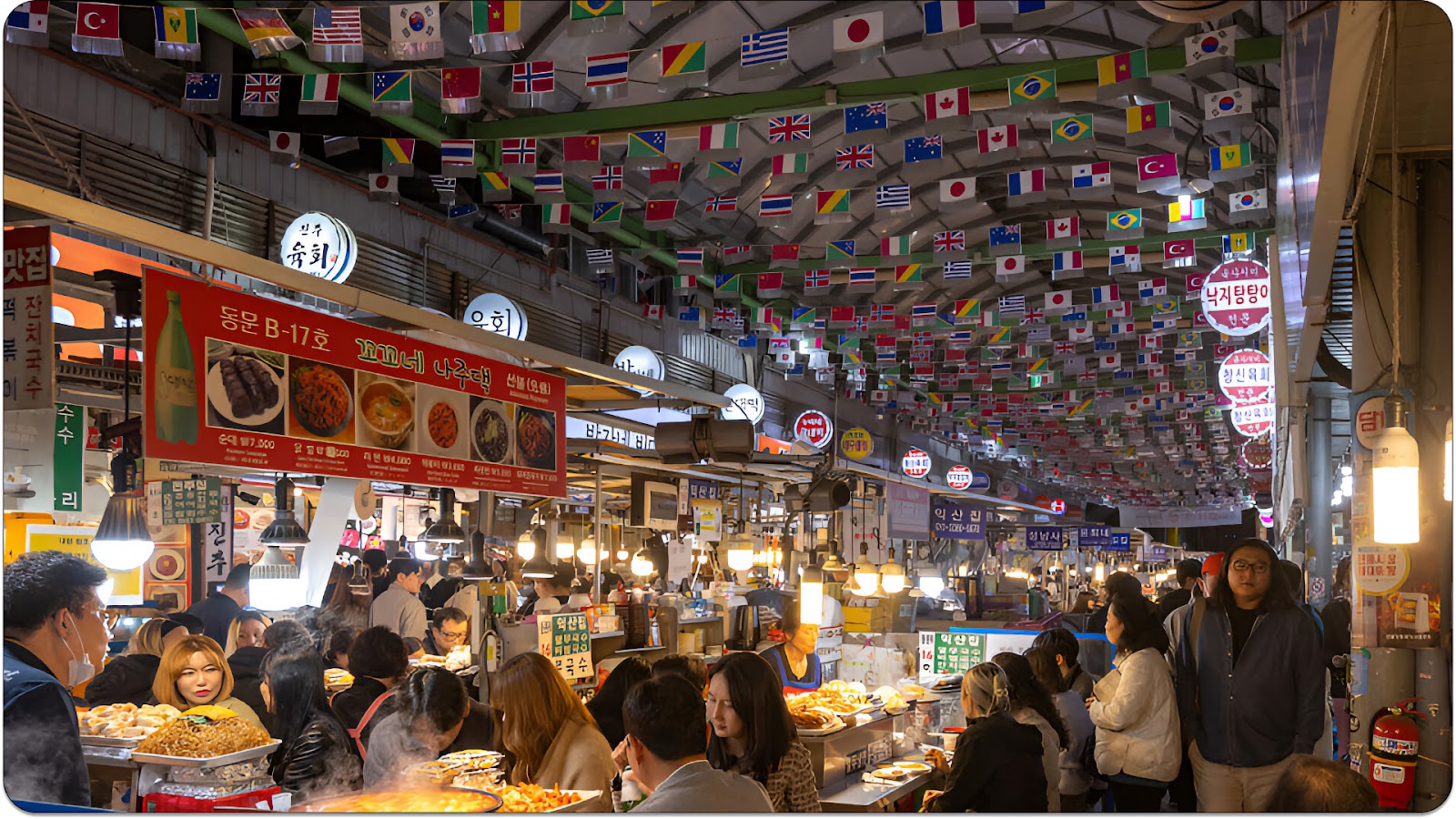
Gwangjang Market is Seoul’s street food paradise. Skip mall food courts—here, stalls serve classics like crispy bindaetteok (mung bean pancakes), chewy ddeokbokki (spicy rice cakes), and knife-cut noodles in rich broth.
Chaotic but welcoming, narrow aisles overflow with sizzling griddles and steaming pots. Grab a stool at any counter—vendors happily guide orders through gestures and smiles, even with language gaps. It’s a no-frills dive into Korean food culture, where flavors stay true to generations-old recipes.
Uncover a Nation’s Heartbreak at the Korean War Memorial
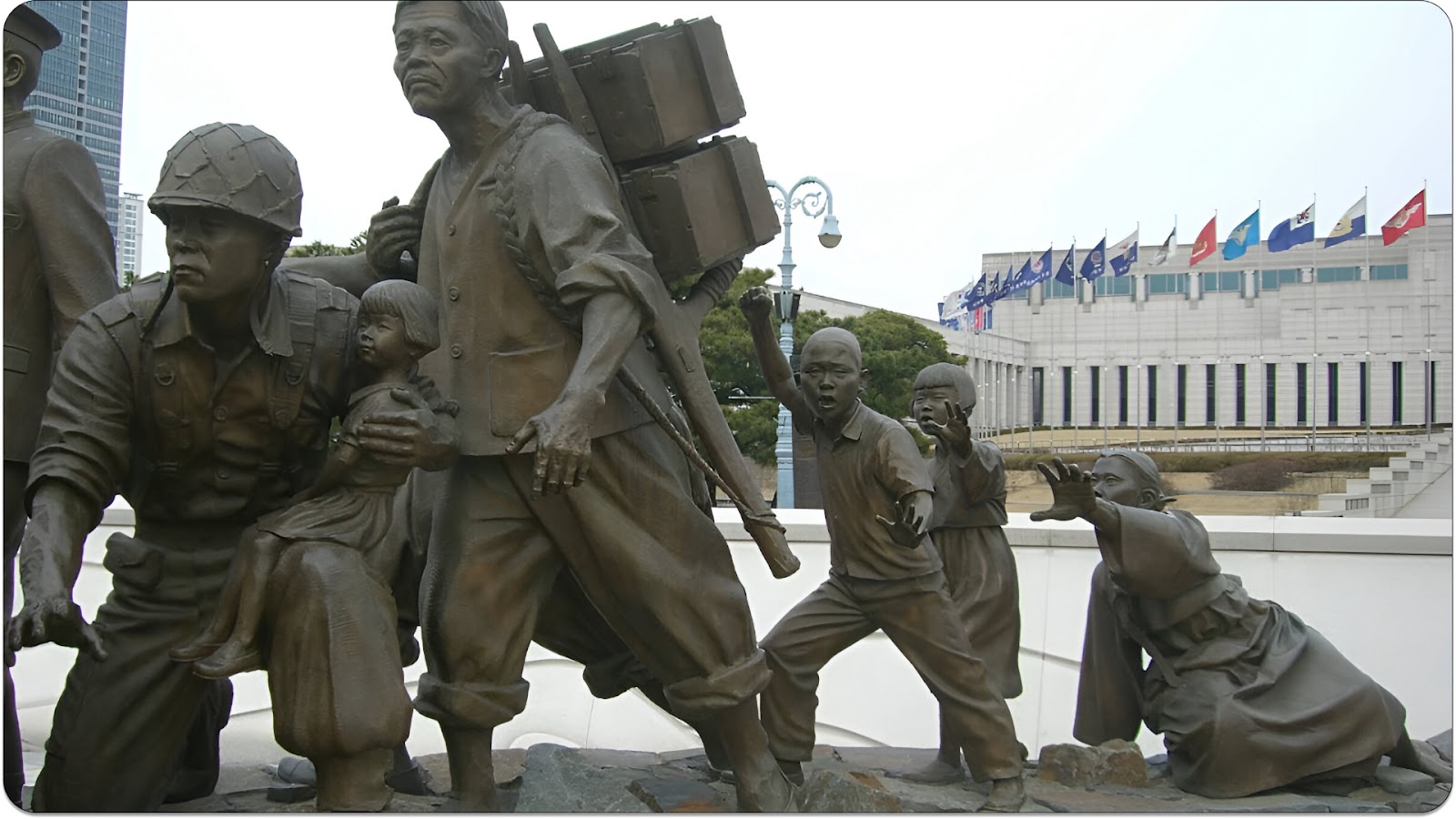
Discover Korea’s poignant history at the Korean War Memorial in Yongsan. This carefully designed museum honors soldiers and civilians affected by the conflict, with exhibits showing how war reshaped national identity. While the National Museum of Korea draws bigger crowds, consider starting here for insights into modern Korea’s foundations.
Fewer visitors come here compared to popular spots, creating a quieter space to engage with displays. Beyond documenting war impacts, the memorial’s War History Room stands out. It places Korean events alongside global historical milestones, tracing connections from 2000 BC to present day. Clear layouts help draw lines between regional developments and current realities.
Find Cultural Gems in Insadong’s Artsy Streets
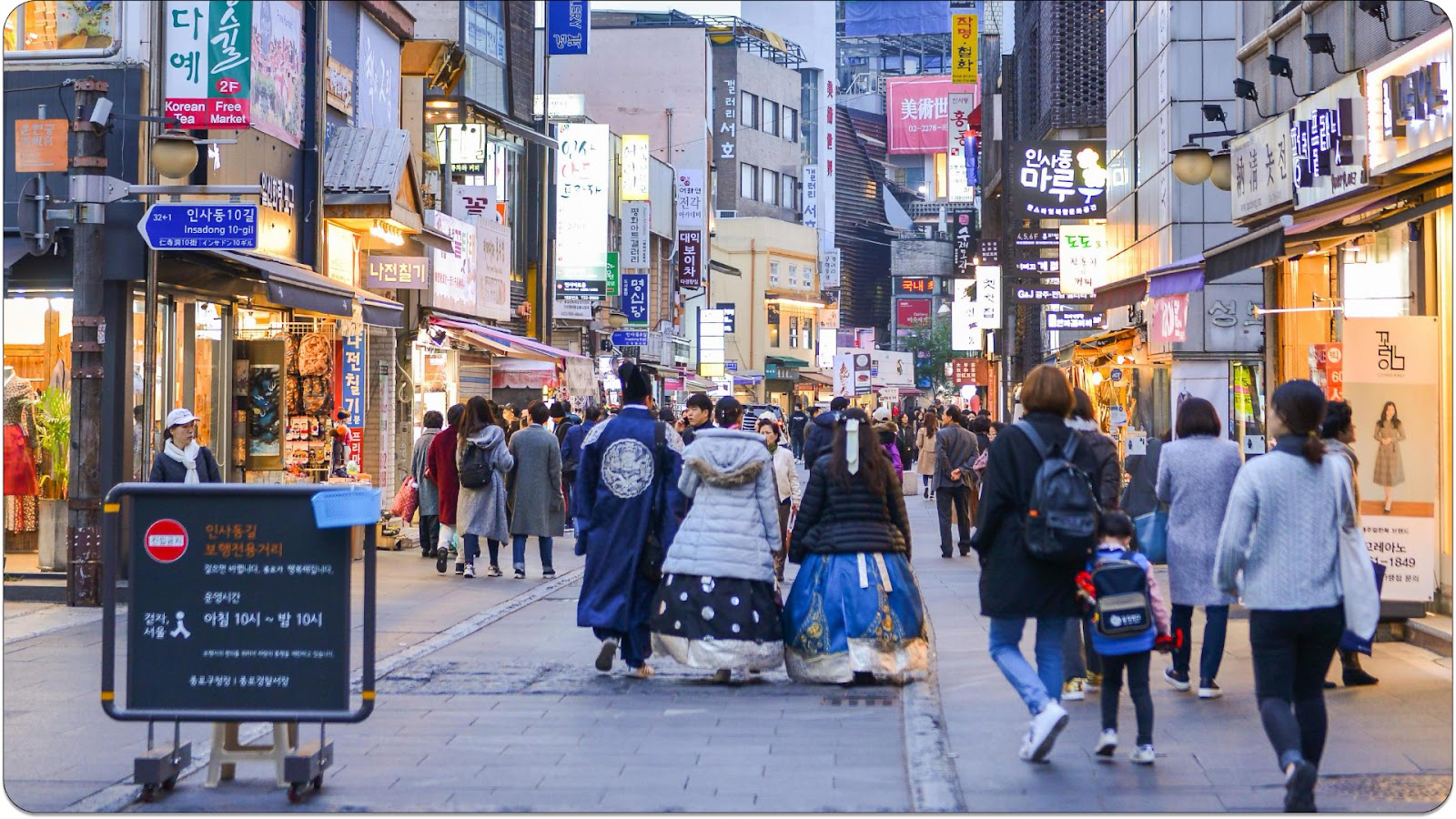
Insadong remains Seoul’s cultural heart, a walkable zone packed with traditional crafts, antiques, and unique souvenirs. Wander through narrow streets filled with art galleries, pottery shops, and cozy teahouses. Grab classic japchae—stir-fried noodles with veggies and sesame—or other local bites while browsing.
Local artists often display works in area galleries, many free to enter. Some owners even give out handmade postcards or bookmarks as friendly souvenirs. Shops and galleries mix effortlessly here, inviting visitors to admire or buy handmade items while soaking in creative vibes.
Explore Hongdae’s After-Hours Energy
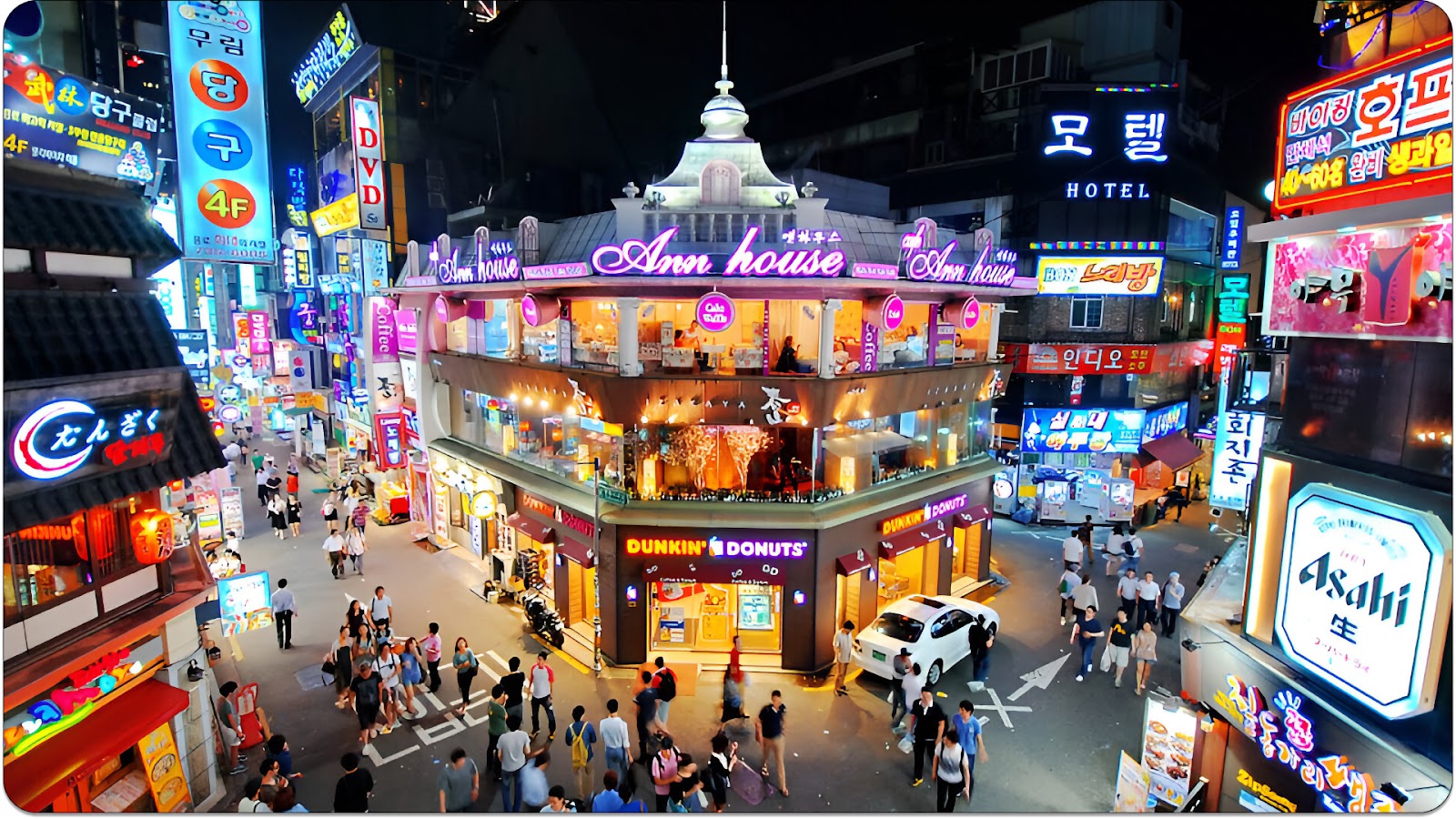
Step into this university district after dark, and you’ll feel its buzz immediately. Known for Hongik University’s art programs, the area naturally became a hub for creativity. Street performers crowd pedestrian zones at dusk, mixing K-pop covers with original tracks.
Forget strict plans—wandering side streets is part of the fun. Peek into cafes designed like retro laundromats or comic book scenes, where interiors rival the menu. Hunt for one-of-a-kind clothing in indie boutiques, far from mainstream mall vibes. After sunset, carts serve spiral fried potatoes on sticks or sweet egg bread so good, you’ll rethink breakfast forever.
Nightlife here lives up to Seoul’s reputation. Even if clubs aren’t your scene, stick around for the midnight energy. Crowds swell, neon blazes, and music clashes from every door—a raw, unfiltered version of the city rarely seen in guidebooks.
Unwind Along Cheonggyecheon Stream
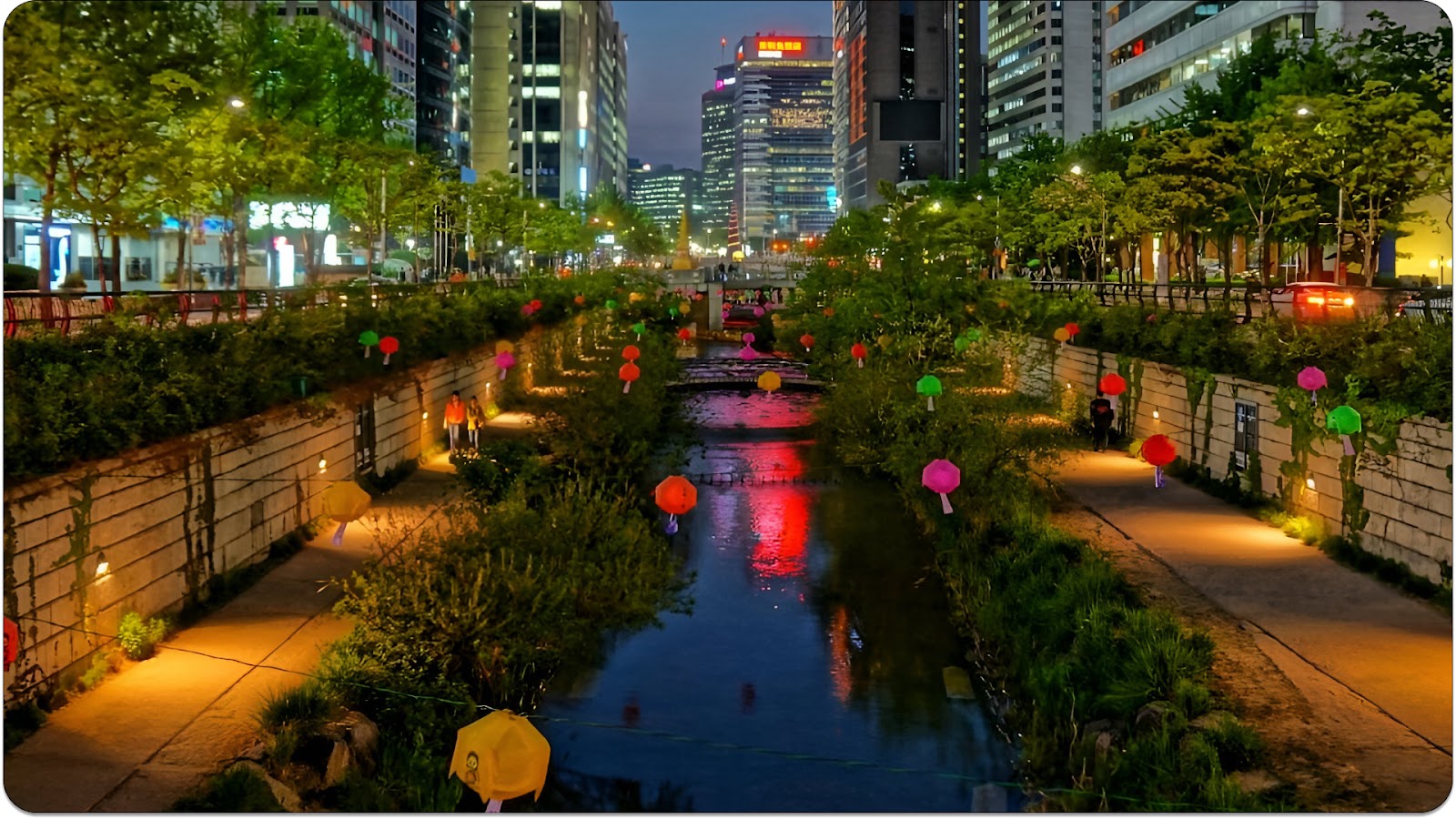
Seoul’s concrete core hides a surprise: a restored urban stream stretching seven miles. Once buried under a highway, this waterway now offers calm amid skyscrapers.
The contrast mesmerizes—glass towers loom above, while fish dart under stone-stepped currents. Come at night when LED-lit bridges glow, and office workers picnic on banks with snacks. Seasonal festivals fill the water with floating lanterns, turning the stream into something surreal. Hard to imagine this peaceful spot was paved just decades ago—proof the city values green spaces as much as growth.
Marvel at the Alien Spaceship of Dongdaemun Design Plaza
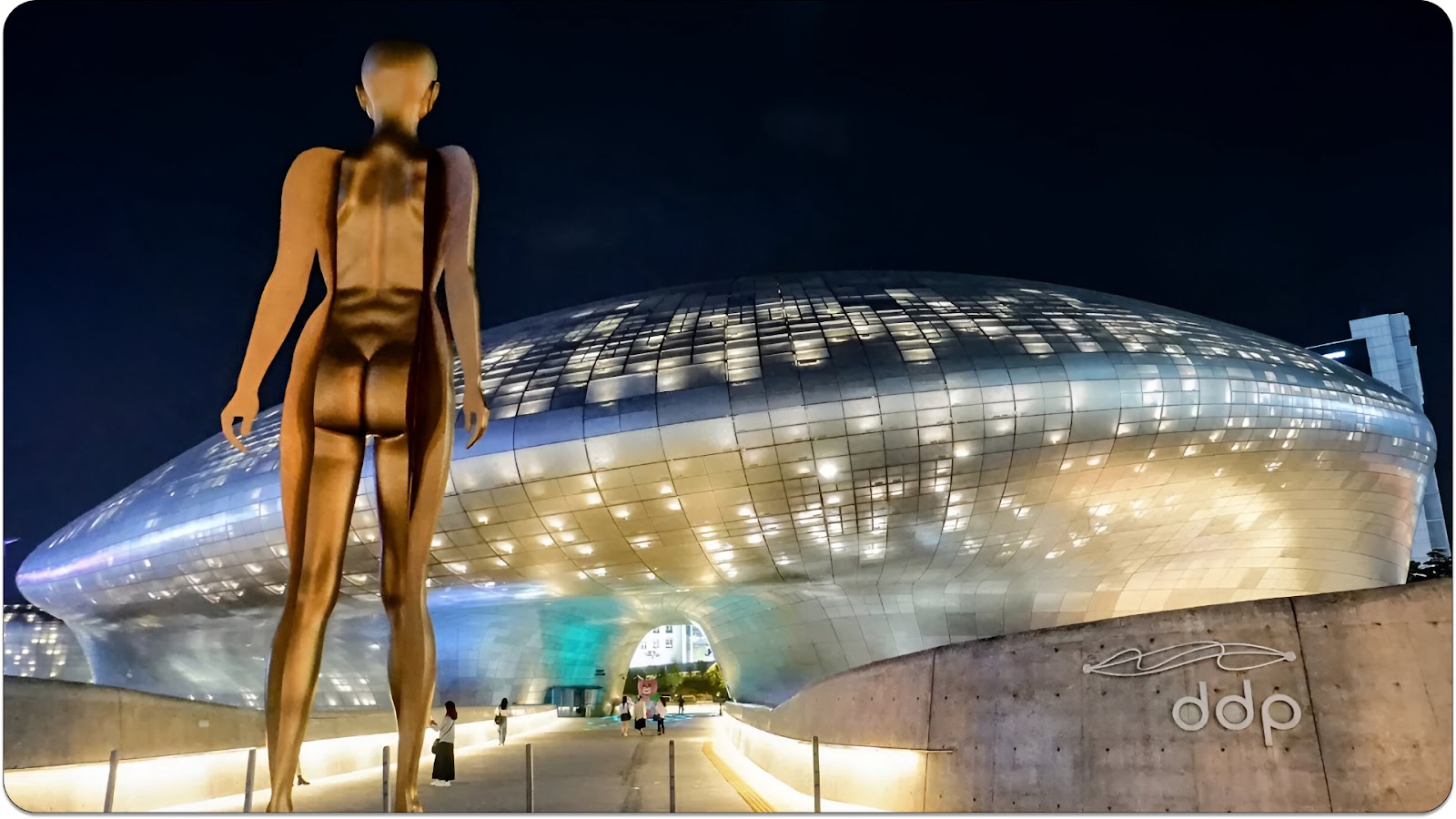
Check out Dongdaemun Design Plaza’s alien spacecraft vibes in central Seoul. Designed by architect Zaha Hadid before her passing, this massive silver structure breaks every architectural rule with smooth, curving surfaces that mimic liquid metal. No sharp edges. No obvious doors. Just a flowing, futuristic shape now iconic to Seoul’s skyline.
Inside feels just as surreal. Multi-level exhibition halls host fashion shows, tech displays, and art installations, with spaces blending into each other without clear divisions. Complex never closes—shops, galleries, and exhibits run 24/7, drawing night owls and travelers craving culture at odd hours.
Don’t miss rooftop garden after dark. Thousands of LED roses light up, forming a glowing meadow that’s blown up on Instagram. Even if you skip photos, sitting among electronic blooms with city views blends Seoul’s tech edge and artistry perfectly.
Discover Royal Secrets at Changdeokgung’s Hidden Garden
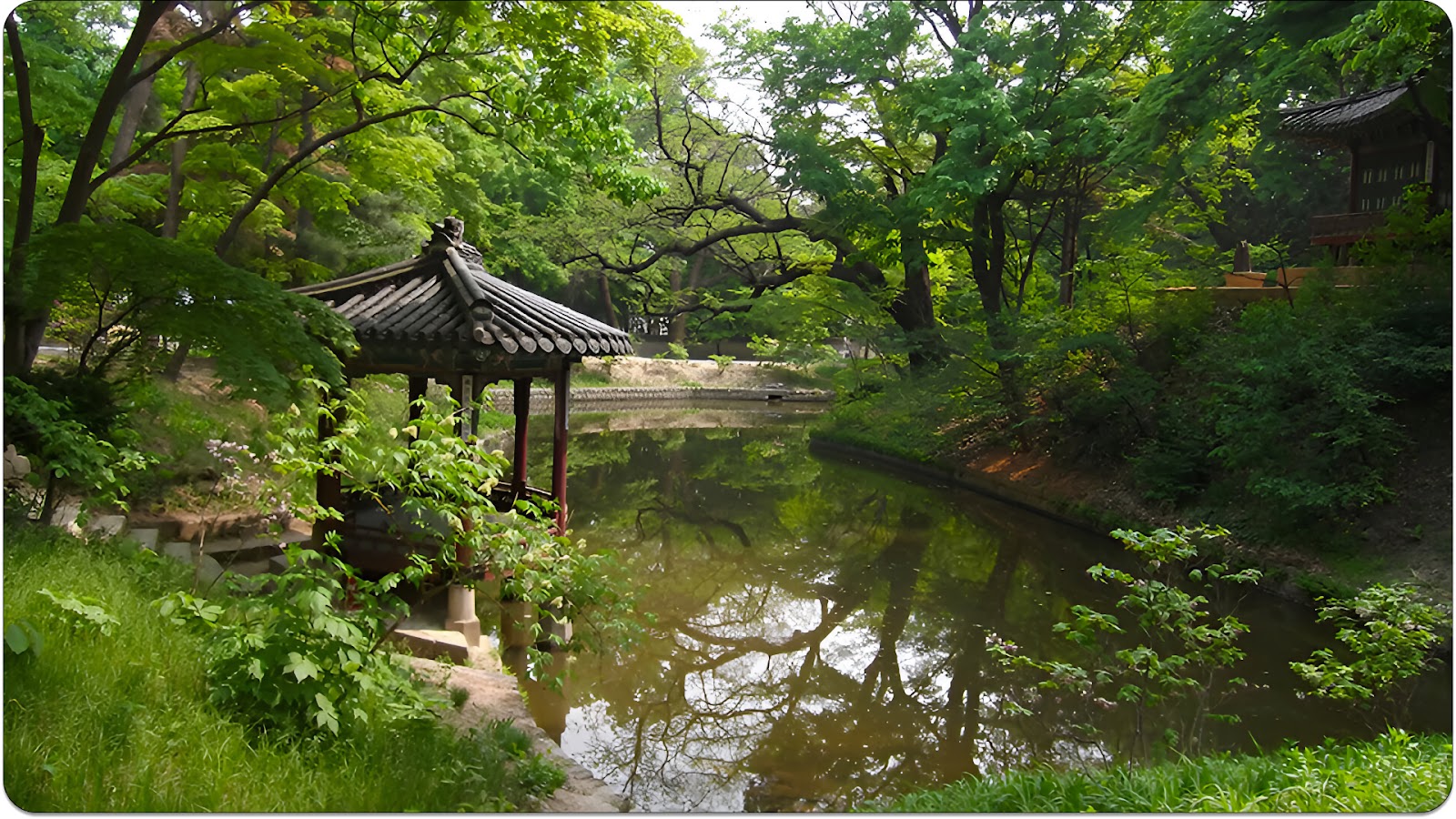
Changdeokgung Palace offers quieter, more authentic vibes compared to busier Gyeongbokgung. This UNESCO site feels like stumbling on a hidden gem. While main buildings impress with detailed architecture, real magic lies in Huwon, its Secret Garden.
Join limited guided tours to explore stone paths once walked by royalty.
Ancient trees—some over 300 years old—shade pavilions built for relaxation and study away from court drama. Seasons transform this peaceful escape: autumn maples blaze red-gold, spring cherry blossoms dust ponds with pink, and winter’s bare branches frame traditional structures with stark beauty. Limited daily access keeps crowds small, letting you soak in calm rarely found in Seoul’s fast-paced streets.
Witness the Dawn Spectacle at Noryangjin Fish Market
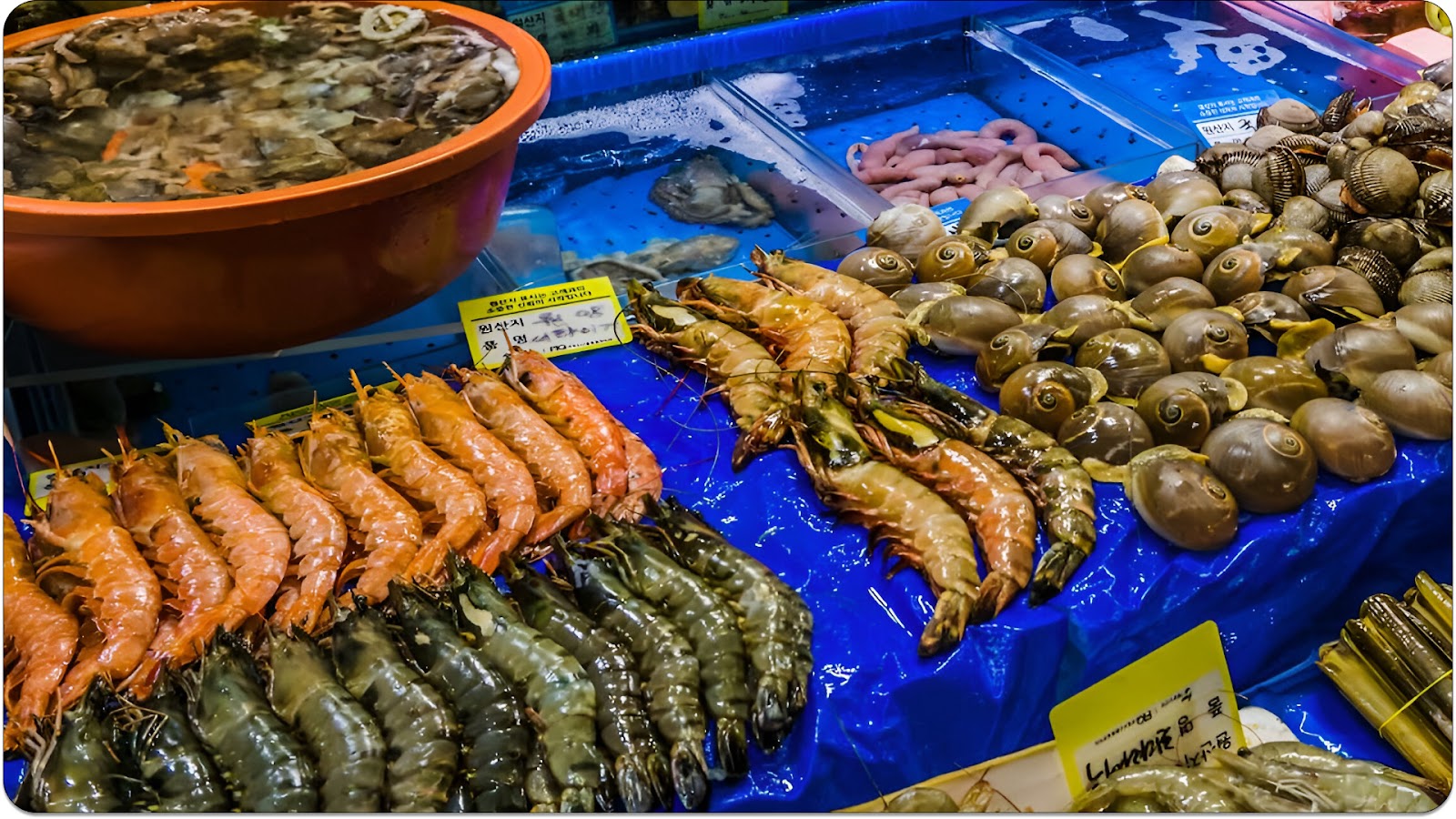
Squeamish travelers, take note: this fish market experience isn’t for those with weak stomachs or love for sleeping in. Noryangjin bursts into action around 3AM as boats unload fresh catches from coastal waters. Real action—those lively wholesale auctions where restaurants grab daily supplies—starts long before sunrise over Han River.
Expect chaos underfoot, wet floors, and an adrenaline rush for food lovers. Point at your chosen seafood—no Korean needed—then head upstairs. Family-run spots upstairs cook your haul for a small fee. Just grab a seat, and minutes later, your meal arrives, fresh from market to plate.
FAQs
Is Seoul Expensive?
Seoul’s prices sit mid-range compared to other major cities worldwide. Accommodation in central areas like Gangnam often comes with high costs, but affordable options exist for transport and food. A meal at mid-range restaurants usually runs ₩10,000-₩20,000 ($7-$15), while subway rides begin at ₩1,400 ($1). Luxury items and imported goods tend to carry premium price tags, though budget-friendly choices are widely available.
Is Seoul Safe?
Seoul ranks as a safe city. Violent crime is uncommon. Tap water’s fine to drink, food safety standards are strict, and healthcare stays accessible. Local norms emphasizing respect mean harassment isn’t typical, though solo travelers might stay extra alert in nightlife spots like Itaewon. Seasonal issues pop up—think summer typhoons or dusty air days.
Is Knowledge of Korean a Must in Seoul?
Basic Korean skills aren’t essential for getting by in Seoul, but they’ll make everyday experiences richer. English works fine in most tourist spots, on subways and buses, and with younger crowds. Venture beyond those spaces—like chatting with older shop owners at neighborhood markets—and even simple phrases or a quick translation app can bridge gaps.
How to get around Seoul?
Navigating Seoul is straightforward thanks to efficient transport options. Subway networks cover most areas, with English signs and announcements. Buses use color-coding to indicate route types—green, red, blue. Taxis are affordable but cost more in heavy traffic. Walking or biking works well in pedestrian zones like Myeongdong or along Han River paths. Most areas prioritize foot traffic, making exploration hassle-free without vehicles.
Final Thoughts

Seoul shows how a city can honor its past while racing toward tomorrow—a place where Joseon palaces stand beside neon-lit streets, and peaceful mountain paths sit just minutes from buzzing nightlife. From the royal beauty of Gyeongbokgung Palace to the futuristic shape of Dongdaemun Design Plaza, every corner reveals resilience, creativity, and cultural pride. Visitors taste old recipes in markets like Gwangjang, explore art-filled Insadong alleys, or remember history at the Korean War Memorial. By day, streets buzz with performers, hikers, tech minds. After dark, LED gardens glow and K-pop rhythms take over.
Beyond landmarks, Seoul’s magic is mixing tradition with modern life. Wear a Hanbok to walk like royalty or leave a lock at N Seoul Tower—each moment connects past and present. Easy to explore, full of energy, Seoul invites travelers to join its rhythm. Alleys, streams, towers all beat with a nation’s heart—always changing, always holding onto its roots.
